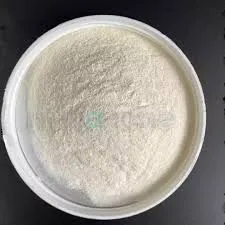
Aug . 13, 2024 13:08 Back to list
Exploring the Benefits and Applications of Hydroxypropyl Methylcellulose in Various Industries
Uses of Hydroxypropyl Methylcellulose
Hydroxypropyl methylcellulose (HPMC) is a versatile cellulose derivative that has gained significant attention and application across various industries due to its unique properties. This white, odorless powder is soluble in hot and cold water, making it an ideal choice for myriad uses in pharmaceuticals, food, cosmetics, and construction. Its multifunctional characteristics, including thickening, binding, film-forming, and emulsifying properties, enable HPMC to fulfill diverse roles in different formulations.
Uses of Hydroxypropyl Methylcellulose
In the food industry, HPMC serves as a food additive, renowned for its texturizing and stabilizing capabilities. It is often employed in gluten-free baking to mimic the structure provided by gluten, resulting in improved texture and shelf life of gluten-free products. Furthermore, HPMC is utilized as a thickener in sauces, dressings, and soups, contributing to a desirable mouthfeel and preventing ingredient separation. Its ability to form hydrogels also aids in moisture retention, making it an invaluable ingredient in ice creams and frozen desserts.
uses of hydroxypropyl methylcellulose

The cosmetic industry utilizes HPMC for its thickening and film-forming properties in various personal care products, including lotions, shampoos, and creams. It acts as a stabilizing agent in emulsions, ensuring that oil and water phases remain mixed, thus enhancing product consistency and performance. Additionally, HPMC is used in makeup formulations, providing a smooth application and long-lasting wear. Its mildness and non-irritating nature make it suitable for sensitive skin applications, further broadening its appeal in personal care.
Moreover, HPMC plays a pivotal role in construction and building materials. It is employed as an additive in cement and dry mortar formulations to improve workability, water retention, and adhesion properties. By enhancing the bonding quality of these materials, HPMC contributes to the longevity and durability of construction projects. Its ability to improve the performance of coatings and paints ensures better application and a smoother finish.
The versatility of HPMC extends to other fields, such as agriculture, where it is used in controlled-release fertilizers and as a thickening agent in pesticide formulations. This not only enhances the efficacy of agricultural products but also reduces environmental impact through targeted delivery.
In summary, hydroxypropyl methylcellulose is a multifunctional compound with a broad spectrum of applications across various industries. Its unique properties make it a key ingredient in pharmaceuticals, food, cosmetics, and construction materials, among others. As research continues to explore novel uses and applications, HPMC is poised to remain an essential component in innovative formulations that meet consumer demands for performance and safety. As such, its significance in both industrial and commercial settings is expected to grow, further cementing its place in modern manufacturing and product development.
-
Versatile Hpmc Uses in Different Industries
NewsJun.19,2025
-
Redispersible Powder's Role in Enhancing Durability of Construction Products
NewsJun.19,2025
-
Hydroxyethyl Cellulose Applications Driving Green Industrial Processes
NewsJun.19,2025
-
Exploring Different Redispersible Polymer Powder
NewsJun.19,2025
-
Choosing the Right Mortar Bonding Agent
NewsJun.19,2025
-
Applications and Significance of China Hpmc in Modern Industries
NewsJun.19,2025







